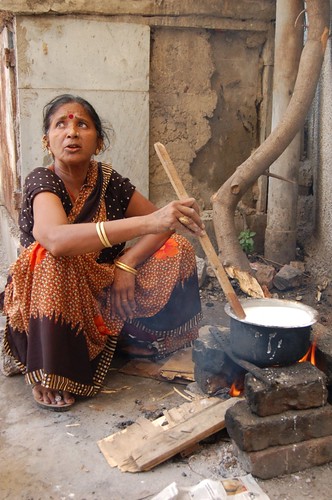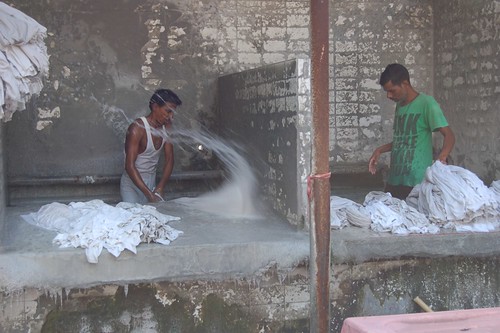To kick off our 4-day weekend, I hooked up with my go-to gal for walking tours – Surekha of Delhi Metro Walks. Yesterday’s tour started near Mandi House, Delhi’s cultural hub. Surekha introduced us to an area of town that glittered with art, theatre and innovative architecture in the 1950s. We meandered down quiet shady lanes, making note of the many museums, art galleries, performance venues and other cultural attractions, many of which helped to bring Delhi into the modern era. My favorite spots on this walking tour were most definitely NOT modern, but I’ll save the best for last.
I bet you don’t think of scenes like THIS when you picture New Delhi! Wide sidewalks free of dogs, cows and monkeys – such a treat.

Allow me a short vent about how frustrating it is that most Delhi cultural outlets do NOT have their own website. It takes a LOT of legwork to find out what’s going on at these places. Nevertheless, based on the walking tour, here are newly added items on my to-to list:
* Shriram Bharatiya Kala Kendra, a Delhi cultural institution, has staged the Ramlila every autumn since 1957, telling the story of Ram through music, dance and drama. According to the organization’s website, “The story of Ram has been handed down to us as ‘the conquest of good over evil’. Ram’s life consists of a multitude of episodes where his divinity and compassion come forth. It is time to lift the subtle but impregnable veil that lies between the divine and us, thereby making our own lives more meaningful.”
* Triveni Kala Sangam, a center for arts education, performance and exhibition, is housed in a historic building designed by American architect Joseph Stein. With several galleries and auditoriums, a sculpture garden and terrace cafe, it’s a place worthy of lingering.
* A Hindustan Times article from last year described the Shri Ram Centre for Performing Arts as “one of the most prominent cultural organisations of the Capital.” It offers up plays in both Hindi and English, so I’ll have to keep an eye out for an English-language production. The building, designed by Indian architect Shiv Nath Prasad, was inspired by the poured-concrete modernism of the West in the late ’60s and early ’70s and is considered innovative for its seemingly gravity-defying cylindrical base topped with an overhanging rectangle. Although not necessarily attractive, the performing arts center was especially meaningful for me in that Tony’s father was a successful architect in Kansas City during the same era and designed precisely the same style of buildings!
* Safdar Hashmi Memorial Trust honors Safdar Hashmi, a political activist and actor who was murdered while performing a street play in 1989. This organization actually DOES have a website: sahmat.org, which explains that SAHMAT promotes performances, exhibitions, book publications, posters, audio recordings, and so on to “uphold the values of secularism and cultural pluralism … and to underline the concept of unity in diversity of the Indian nation and the people.”
Surekha (and many of her groupies) love discussing the local flora, so she often pauses the walking tour to consult her Trees of Delhi book and share the wisdom. I know this is a genuine passion for many people, and I do appreciate the presence of so much green in this big city; I just don’t need to know the names of everything. I’d rather spend more time on the history and the culture. Anyway, here’s a cool tree we talked about. No, I don’t remember its name.

OK, I have to admit this tree is pretty amazing. A wee part of me wishes I had paid attention when Surekha identified it.

I remember that this one was the Sandpaper Tree, and sure enough, Kathleen said, “Its leaves feel sandpapery!”

Another interesting stop on the tour was a former palace built by a Bahawalpur prince in 1937. Now home to the National School of Dance and other offices, the white-washed palace stands strong, but the once impressive gardens were sacrificed to the city’s growing metro system.
Katrina rests and enjoys a view of the metro construction site.

Surekha shares the history of the building and efforts to conserve it.

A cobbled-together Shiva shrine at the site.

After an introduction to modern Delhi’s cultural scene, we walked through a gate and back in time for a rest stop at Agrasen ki Baoli, a 14th-century step well.

Perched at the top of 103 steep steps, we enjoyed cookies and tea poured by the local chai wallah.

Surekha explained that during her last visit to the baoli, she ran into her friend’s driver and asked, “What are you doing here?” He was flustered and clearly didn’t want to say. Then she noticed her friend’s son selling chai. He had apparently quit his job to start his chai business and then struck a deal with his mother’s driver – a ride to work in exchange for free tea. So Surekha struck her own deal – she’ll keep her mouth closed in exchange for tea breaks for her tour groups.
With Connaught Place – Delhi’s high-rise financial and commercial district – in the background, the historic baoli offered a beautiful juxtaposition.

Our posse – Katrina, Nancy, me, Beth, Kathleen.

Leaving the baoli, we had walked only a short distance when we started to see bed sheets and clothes drying in the streets.

I knew we were getting close to the Devi Prasad Sadan Dhobi Ghat, an open-air laundromat where washermen – called dhobis – wash clothes and linens for local hotels, businesses and families. I had been looking forward to this all day!
Various styles of wash basins filled the courtyard. Some men bent over raised tubs, scrubbing with coarse brushes. Others stood thigh-deep in sunken tubs, swishing laundry through the soapy water. Others worked in elevated cubicles, flogging wet towels on concrete tables before draping them over a wall. Machines lined the perimeter, but these were unlike any washing machines I had ever seen.
This friendly dhobi stood by as bubbles poured out of his washing machine.

This lady was cooking up something liquidy and white over the fire. I asked if it was food, but she explained (through an interpreter) that she was making starch from arrowroot powder.

Ironing pile. Ugh. Women do the ironing here in this small dark room.

According to the Hindustan Times (May 21, 2011), 35 dhobis work at the ghat. They charge 15 rupees (28 cents) per item. In an emergency, you can pay 20 rupees (37 cents) and have it delivered within four hours.
Leaving the dhobi ghat, we spotted this security guard getting a curbside shave. Surekha made us all pose around him for a photo! The barber got a good laugh out of it, but I think his client was unimpressed.










As always Shazza, loving reading your adventures, you are really sucking the marrow out of India xxx